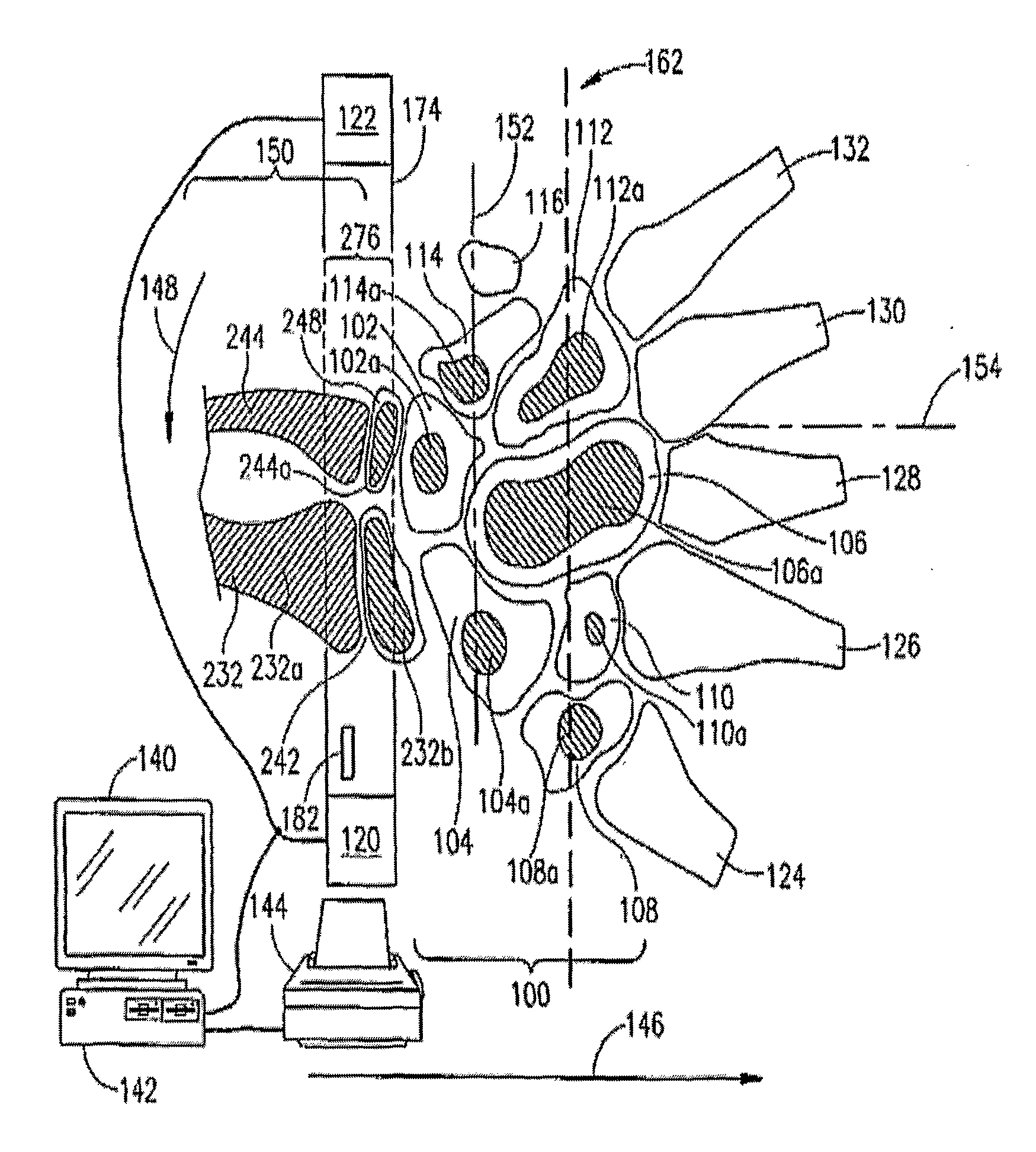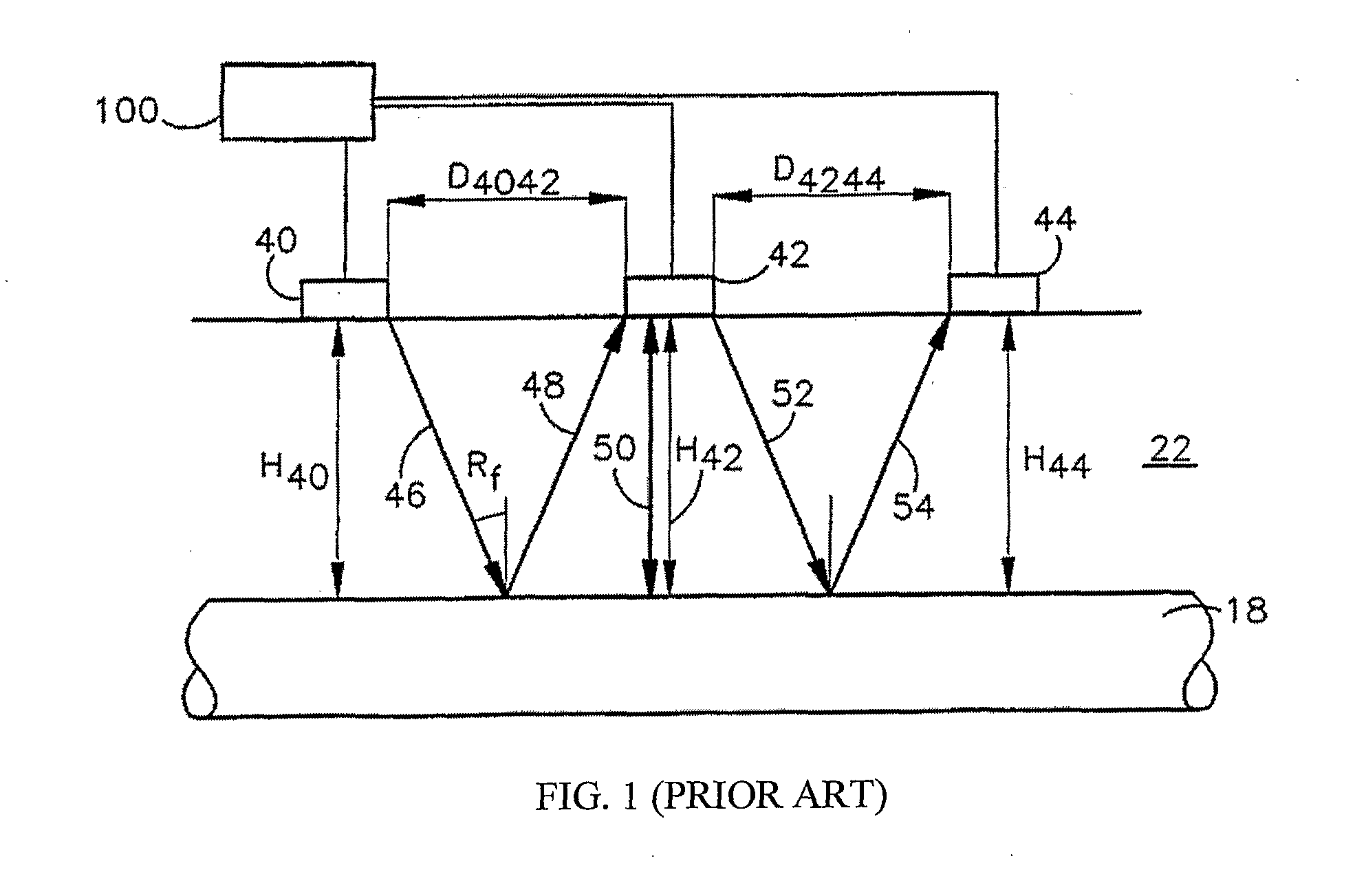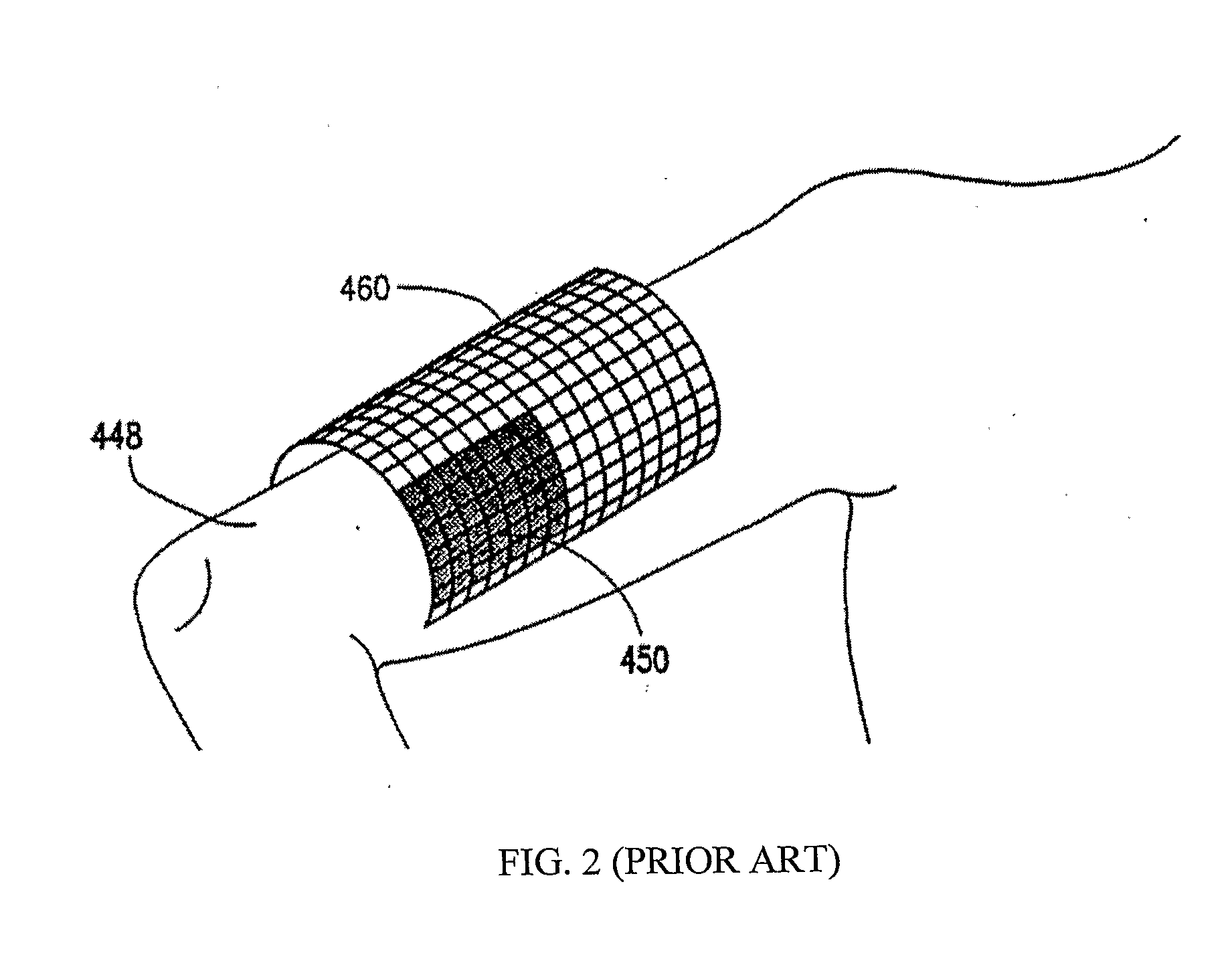Bone Sonometer
- Summary
- Abstract
- Description
- Claims
- Application Information
AI Technical Summary
Benefits of technology
Problems solved by technology
Method used
Image
Examples
example 1
[0216]In order to assess the properties of the device herein disclosed, a series of tests were performed to determine its precision, accuracy, compliance with international standards, and the effects of cleaning and disinfection on the device.
[0217]Two different in vivo precision tests for the device of the current invention were conducted. Included in these precision tests were: (1) a reproducibility study which involved the assessment of in vivo precision between different instruments, connecting slot configurations and probes; and (2) a reproducibility study which measured the in vivo precision between different operators and probes. The objectives of both studies were to estimate the variability, between device components and between operators, of SOS measurements of the distal one-third of the radius. The in vivo precision (reproducibility), expressed by the coefficient of variation (CV), ranged from 0.60% to 0.73%.
[0218]In addition, accuracy tests were performed as part of the...
example 2
[0220]Two clinical studies were undertaken in order to create normative reference databases for SOS in a Caucasian female population. The first of these was a multisector study performed in North America. This study was conducted on a group of Caucasian females between the ages of 20 and 90 years old by five investigators at five geographically diverse investigational sites in North America (4 in the U.S. and 1 in Canada). Potential subjects were identified by placing advertisements in the newspaper, contacting potential subjects from drivers' license listings, recruiting at college and university campuses, and recruiting at nursing homes. Eligible women had a negative history of osteoporosis fracture or chronic conditions affecting bone metabolism, and were not taking medications that affect bone metabolism. Of the 573 subjects recruited, 545 subjects were found eligible according to the inclusion / exclusion criteria of the study; SOS measurements at the distal third of the radius w...
example 3
[0228]The second study designed to create normative reference databases for SOS in a Caucasian female population was conducted in Caucasian females between the ages of 20 and 90 years old by a single investigator at Asaf-Harophe Medical Center, Israel. The eligibility criteria were met by 1,132 subjects who had their SOS measurements of the distal third of the radius taken. The mean age of the study subjects was 49.3±17.6 years with a range of 20 to 89 years. Each decade was roughly comparable in size except for the decade 40-49, in which there were 266 subjects. Sixty percent of the subjects in this study were pre-menopausal.
[0229]The mean SOS was 4082±151 m s−1 with a range of 3510 to 4602. Ninety percent of the SOS measurements were between 3800 and 4300 m s−1. Over half of the measurements (52.5%) were between 4000 and 4200 m / sec. Table 4 presents mean SOS result by age decade.
[0230]The moving average SOS increases to a peak of 4173 m s−1 at the age of 39, with population standa...
PUM
 Login to View More
Login to View More Abstract
Description
Claims
Application Information
 Login to View More
Login to View More - R&D
- Intellectual Property
- Life Sciences
- Materials
- Tech Scout
- Unparalleled Data Quality
- Higher Quality Content
- 60% Fewer Hallucinations
Browse by: Latest US Patents, China's latest patents, Technical Efficacy Thesaurus, Application Domain, Technology Topic, Popular Technical Reports.
© 2025 PatSnap. All rights reserved.Legal|Privacy policy|Modern Slavery Act Transparency Statement|Sitemap|About US| Contact US: help@patsnap.com



